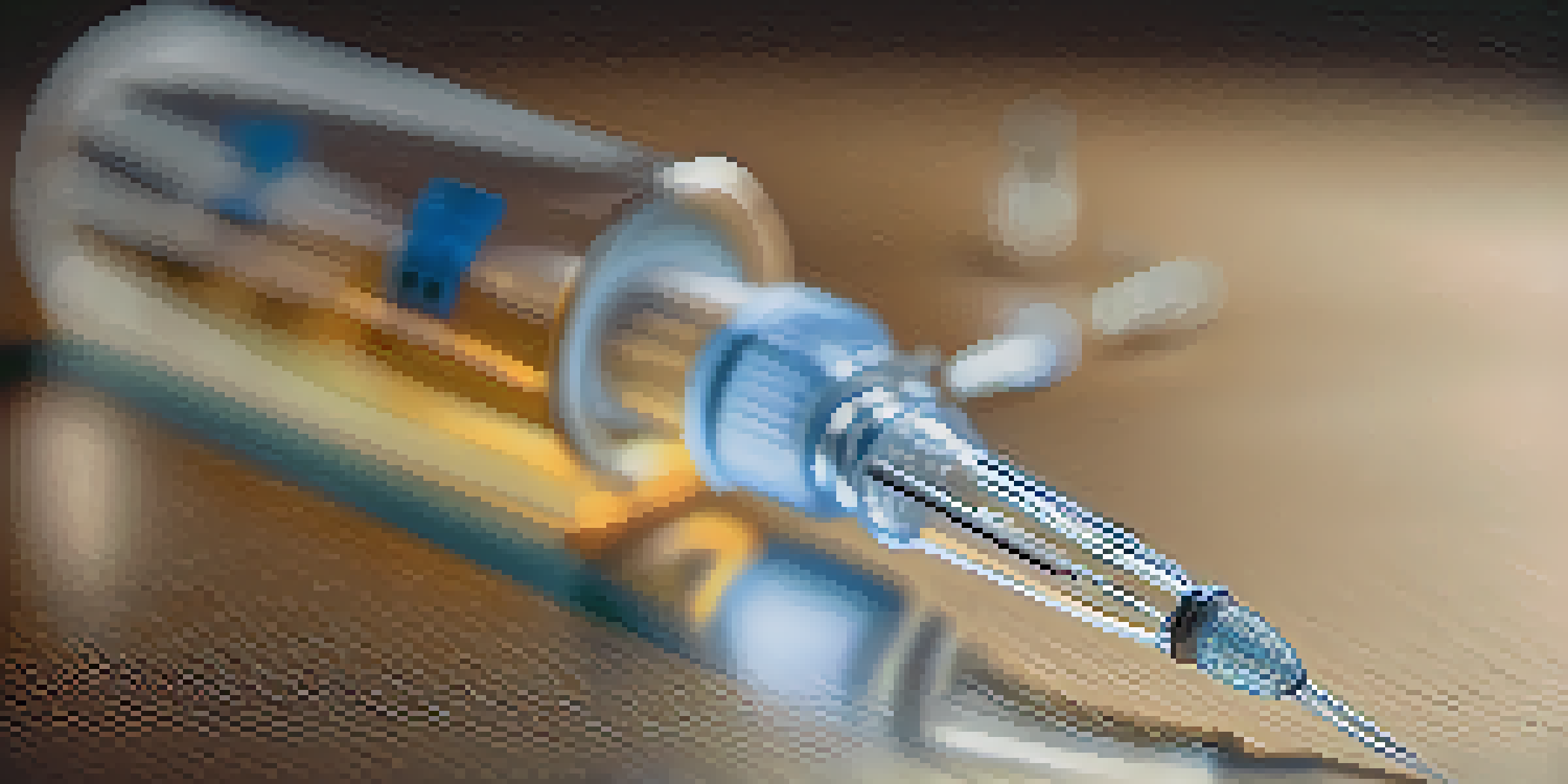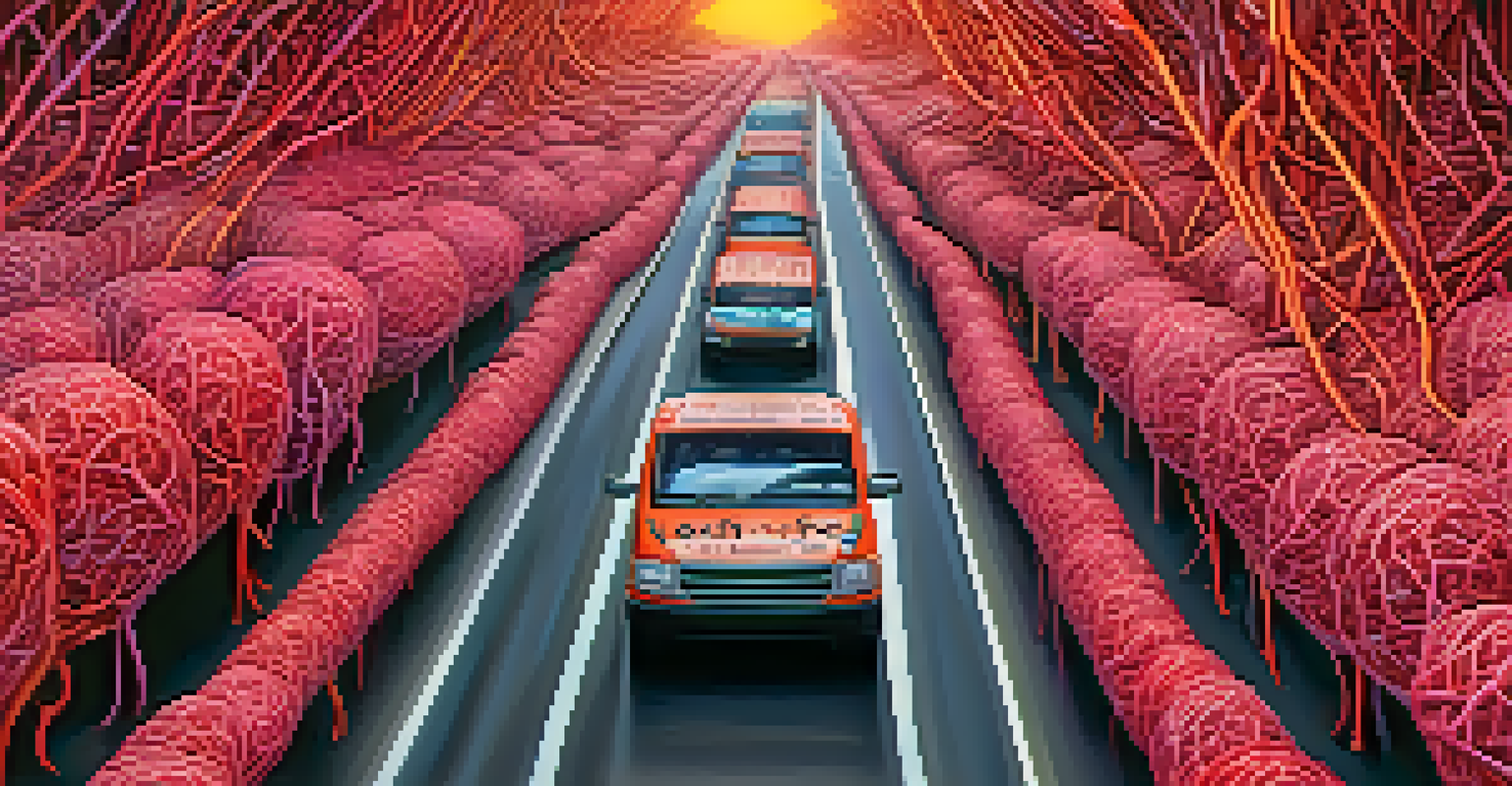Innovations in Drug Delivery Systems: Enhancing Efficacy

Understanding Drug Delivery Systems and Their Importance
Drug delivery systems are essential for ensuring that medications reach their intended targets effectively. They play a crucial role in optimizing therapeutic outcomes, minimizing side effects, and enhancing patient adherence. By focusing on how drugs are delivered, rather than just the drugs themselves, we can improve overall health outcomes significantly.
The goal of drug delivery is to achieve the desired therapeutic effect while minimizing side effects—an essential balance in medicine.
Imagine trying to hit a target with a dart from across the room; the farther away you are, the harder it gets. Similarly, the right drug delivery system ensures that medications are delivered precisely where they are needed in the body. This precision is key in treating various conditions, from chronic illnesses to acute infections.
As we advance in medical technology, understanding the nuances of these systems becomes increasingly important. Innovations in drug delivery not only enhance efficacy but also pave the way for personalized medicine, which tailors treatment based on individual patient needs.
Nanotechnology: A Game Changer in Drug Delivery
Nanotechnology has emerged as a revolutionary approach in the field of drug delivery systems. By manipulating materials at the molecular level, scientists can create nanoparticles that can transport drugs more effectively to their targets. This not only increases the efficacy of treatments but also reduces the required dosage.

Think of nanoparticles as tiny delivery trucks that can navigate through the body's complex pathways. They can bypass barriers that traditional drug forms cannot, ensuring that medications reach their intended site with minimal loss. This leads to better patient outcomes, particularly in cancer therapy and other targeted treatments.
Importance of Drug Delivery Systems
Effective drug delivery systems optimize therapeutic outcomes, minimize side effects, and enhance patient adherence.
The incorporation of nanotechnology is also enhancing the development of sustained-release formulations. These formulations allow drugs to be released slowly over time, providing a steady therapeutic effect and improving patient compliance.
Smart Drug Delivery Systems: Responsive and Adaptive
Smart drug delivery systems represent an exciting frontier, where medications can respond dynamically to the body's needs. These systems often use stimuli-responsive materials that release drugs in reaction to specific biological triggers, such as pH levels or temperature changes. This adaptability can significantly enhance treatment efficacy.
Innovation in drug delivery systems will pave the way for personalized medicine, ensuring that treatments are tailored to individual patient needs.
Imagine a sponge that only releases its water when squeezed; smart drug delivery systems work on a similar principle. They ensure that drugs are released precisely when and where they are needed, reducing waste and improving the overall effectiveness of the treatment. This is particularly beneficial in managing chronic diseases.
Additionally, these systems can help in minimizing side effects by controlling the release of drugs. By tailoring the timing and dosage of medication, patients can experience more targeted treatments with fewer adverse reactions.
Microneedles: A Pain-Free Alternative for Drug Delivery
Microneedles offer a revolutionary approach to drug delivery, providing a pain-free alternative to traditional injections. These tiny needles, often smaller than a human hair, can penetrate the outer layer of skin without triggering pain receptors, making them an attractive option for patients who fear needles.
Consider how a tiny dot can deliver a powerful impact; microneedles can deliver vaccines and medications effectively with minimal discomfort. They can also facilitate the delivery of larger molecules, such as proteins and DNA, that are typically difficult to administer.
Nanotechnology Enhances Precision
Nanoparticles improve drug transport, allowing for targeted delivery and better treatment efficacy, especially in cancer therapy.
The convenience of microneedles extends beyond comfort; they can be designed for self-administration, empowering patients to take control of their treatment. This innovation not only enhances patient satisfaction but can also lead to improved adherence to treatment regimens.
Injectable Hydrogels: Versatile Drug Delivery Platforms
Injectable hydrogels are gaining traction as versatile platforms for drug delivery. These hydrogels can encapsulate drugs and form a gel-like substance that can be injected into the body, where it can gradually release medications over time. This controlled release can lead to prolonged therapeutic effects.
Imagine a sponge that slowly releases water over time; injectable hydrogels work similarly, providing a steady supply of medication. This is particularly beneficial in areas like pain management and cancer therapy, where consistent drug levels are essential for effectiveness.
Moreover, these hydrogels can be engineered to respond to physiological conditions, enhancing their functionality. By tailoring their properties, researchers can create hydrogels that release drugs in response to specific triggers, such as inflammation or changes in temperature.
Oral Drug Delivery Innovations: Enhancing Bioavailability
Oral drug delivery remains one of the most convenient methods for administering medications, but it comes with challenges, particularly regarding bioavailability. Recent innovations aim to enhance how well drugs are absorbed in the gastrointestinal tract, making treatments more effective.
Consider how a sponge absorbs liquid—some materials just soak it up better. Similarly, new formulations and delivery technologies are being developed to improve drug solubility and permeability, ensuring that more of the active ingredient reaches the bloodstream.
Future of Personalized Medicine
Advancements in drug delivery are paving the way for personalized medicine, tailoring treatments to individual patient needs for improved outcomes.
Advancements like lipid-based formulations and solid dispersions are paving the way for better oral drug delivery systems. These innovations not only enhance efficacy but also improve patient compliance by making medications easier to take.
The Future of Drug Delivery: Personalized Medicine
Looking ahead, the future of drug delivery systems is closely tied to the concept of personalized medicine. By leveraging genetic, environmental, and lifestyle factors, healthcare providers can tailor drug delivery methods to meet individual patient needs. This approach has the potential to revolutionize treatment outcomes.
Imagine a suit tailored just for you; personalized medicine aims to create treatment plans that fit each patient perfectly. With advancements in technology, healthcare can move towards more customized approaches that consider a patient’s unique biological makeup.

As we continue to innovate in drug delivery systems, the ultimate goal is to enhance efficacy and improve health outcomes. By focusing on the individual, we can ensure that treatments are not only effective but also more accessible and acceptable to patients.